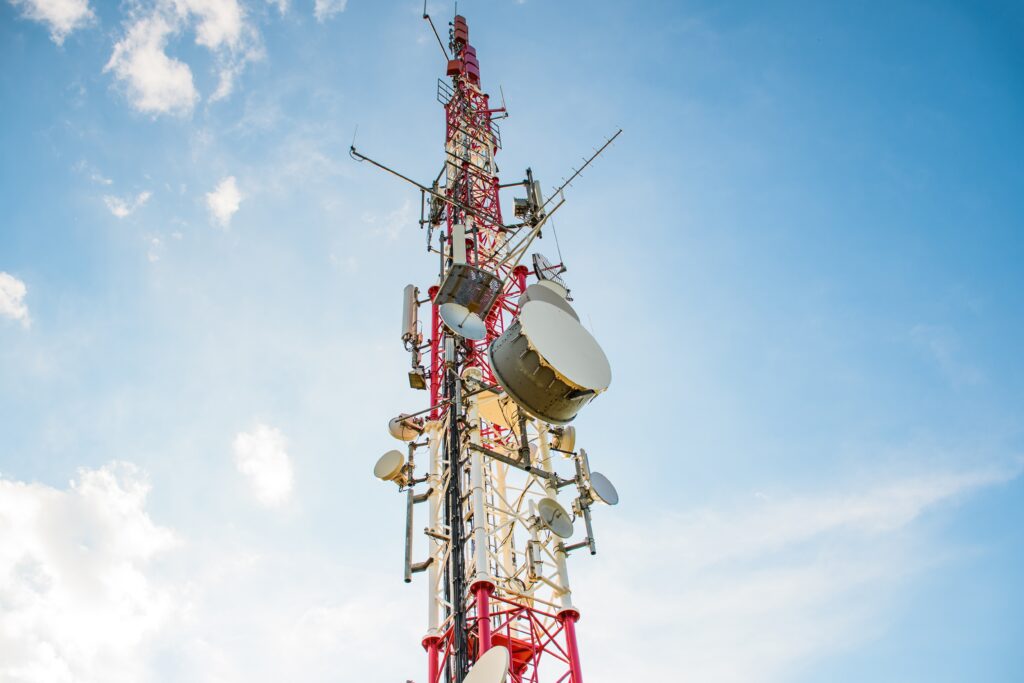AST SpaceMobile Inc. (NASDAQ:ASTS) is a pioneering telecommunications company founded in 2017 by Abel Avellan with the bold mission of building the first space-based cellular broadband network designed to connect directly to unmodified smartphones. Headquartered in Midland, Texas, the company has rapidly grown into one of the most talked-about innovators in the satellite and telecom industries. Unlike traditional satellite internet providers that require specialized hardware, AST SpaceMobile’s vision is to eliminate connectivity gaps by deploying large low Earth orbit (LEO) satellites equipped with advanced phased-array antennas that enable standard mobile phones to access broadband from space. This approach aims to extend seamless cellular coverage to billions of people worldwide, including the estimated 2.5 billion individuals currently lacking reliable mobile internet access, while also creating new possibilities for governments, enterprises, and emergency responders.
The company’s journey from concept to reality has been marked by significant milestones. After early validation with the launch of its test satellites, AST SpaceMobile made global headlines with BlueWalker 3, an experimental satellite launched in 2022 featuring a 693-square-foot antenna array. In April 2023, BlueWalker 3 achieved a landmark breakthrough by completing the world’s first space-based two-way telephone call and later successful 4G and 5G video calls directly with unmodified smartphones, proving the viability of its technology. This accomplishment set AST apart from competitors and validated its ability to deliver broadband voice, data, and video without requiring users to purchase new equipment. To scale this capability, the company launched its first five commercial “BlueBird” satellites in September 2024, marking the beginning of its commercial rollout.
AST SpaceMobile has also built strong alliances with some of the largest mobile network operators in the world. Partnerships with AT&T, Vodafone, Rakuten, Verizon, Bell Canada, and others have given it access to a customer base of nearly 3 billion mobile subscribers. These collaborations allow the company to integrate its satellite service into existing terrestrial networks, enabling MNOs to expand their coverage without the need for costly infrastructure in remote areas. Beyond commercial partnerships, AST has secured important contracts with the U.S. government, including agreements with the Space Development Agency and Defense Innovation Unit, expanding its role into defense and national security applications. With its vertically integrated manufacturing facility in Midland, Texas, already spanning over 185,000 square feet and set to expand to more than 400,000 square feet by the end of 2025, the company is working toward producing up to six satellites per month to accelerate deployment of its constellation.
Today, AST SpaceMobile holds a substantial intellectual property portfolio with more than 3,700 patents and patent-pending claims, covering critical technologies in satellite design, spectrum management, phased-array communications, and network integration. This IP, combined with its early mover advantage, positions the company uniquely within the direct-to-device satellite market. While the business remains in the pre-commercial phase with significant capital expenditures, it has maintained strong liquidity through public offerings, strategic partnerships, and financing, including over $1.5 billion in pro forma cash as of mid-2025. With projections to deploy 45 to 60 satellites by 2026 and begin generating $50 to $75 million in revenue in late 2025, AST is rapidly transitioning from R&D to commercialization.
The company’s background reflects a rare convergence of visionary leadership, cutting-edge technology, and strategic partnerships. By targeting one of the largest addressable markets in the world—the global mobile phone industry—AST SpaceMobile is positioning itself to become a transformative force in telecommunications. Its goal to bridge the digital divide, connect underserved populations, and enhance global connectivity resonates with both humanitarian and commercial ambitions. Despite the risks inherent in scaling such an ambitious project, AST SpaceMobile’s trajectory demonstrates that it has evolved from an idea to a company capable of fundamentally reshaping how people connect to the internet, wherever they are in the world.
Historical Background
AST SpaceMobile’s journey began in 2017 when Abel Avellan, a seasoned entrepreneur with extensive satellite communications experience, founded AST & Science LLC with the bold mission of creating the world’s first space-based broadband cellular network. Avellan had previously built Emerging Markets Communications (EMC) into a global leader before selling it for $550 million, and he brought that same disruptive mindset into AST. From the beginning, the company’s vision was clear: bypass traditional infrastructure limitations and connect billions of underserved people worldwide directly through their existing smartphones.
Key milestones followed in rapid succession. The acquisition of Lithuania-based NanoAvionics in 2018 bolstered manufacturing capabilities, while the successful launch of BlueWalker 1 in 2019 validated the company’s early technical concepts. The turning point came in 2020, when a $110 million Series B funding round was led by Vodafone and Rakuten, with additional backing from Samsung Next, American Tower, and Cisneros. By 2021, AST SpaceMobile went public through a SPAC merger with New Providence Acquisition Corp., raising $462 million in gross proceeds.
The 2022 launch of BlueWalker 3 was the company’s defining moment. Featuring a massive 693-square-foot antenna array, the satellite successfully delivered the world’s first two-way space-to-smartphone calls and later 4G and 5G video calls to unmodified handsets. This breakthrough validated AST’s core value proposition and triggered strategic interest worldwide. The company has since expanded its Midland, Texas production facility to target six satellites per month by late 2025, while forging partnerships with more than 50 MNOs covering nearly 3 billion subscribers. With the September 2024 launch of its first five BlueBird commercial satellites and growing U.S. government contracts, AST has evolved from an ambitious vision into a company on the cusp of large-scale commercialization.

CHECK THIS OUT: Gyrodyne (GYRO) Lands $28.74M Deal for 49 Acres in St. James, NAV Jumps 6% and NioCorp (NB)’s $1.14B Elk Creek Project Set to Transform U.S. Critical Minerals Supply.
Business Model
AST SpaceMobile’s model is designed around wholesale enablement rather than direct competition with mobile carriers. Instead of selling directly to consumers, AST acts as a “super wholesale” provider, offering capacity to MNOs, who then integrate the service into their existing plans. This approach minimizes customer acquisition costs and maximizes scalability by leveraging trusted telecom brands with established subscriber bases.
Revenue is structured through 50/50 sharing agreements with MNOs, with services offered as add-ons or roaming-like “day passes” in remote or underserved regions. Although core revenues remain limited today, the company expects $50–$75 million in the second half of 2025 as satellite launches accelerate. Beyond consumer connectivity, government contracts and enterprise services (e.g., IoT connectivity for agriculture, maritime, or defense) offer additional diversification.
The core product is the BlueBird satellite constellation. BlueWalker 3 proved the concept, while the Block 1 BlueBirds launched in 2024 deliver limited but real services. Block 2 BlueBirds, 3.5 times larger with 10x capacity, will provide higher data throughput of up to 120 Mbps per cell and enable continuous coverage in target markets. By 2026, AST targets 45–60 satellites in orbit to achieve seamless service across the U.S., Europe, Japan, and other priority regions.
Stock Performance Overview
ASTS has been one of the most volatile small-cap tech stocks in recent years, reflecting the high-risk, high-reward profile of space ventures. After debuting near $10 per share in 2021, the stock bottomed at $1.97 in April 2024 as investors fretted about delays, capital intensity, and dilution. Yet the turnaround since mid-2024 has been dramatic.
In July 2025, ASTS closed at an all-time high of $60.06, a nearly 2,900% rebound from its lows. As of September 29, 2025, it trades at $48.84, up more than 250% over the past year. The rally has been fueled by Verizon’s $100 million partnership commitment, Vodafone spectrum agreements, U.S. government contracts, and anticipation of commercial service. The stock remains volatile, but the trajectory reflects rising investor conviction that AST is executing on its bold vision.
Financial Performance
Financially, AST SpaceMobile remains in its heavy investment phase. In Q2 2025, the company reported EPS of -$0.41 and revenue of $1.16 million, missing expectations but still up 61% sequentially. Annual revenue for 2024 was $4.4 million, but growth rates are staggering on a percentage basis, and projections call for 411% CAGR over the next five years. Management expects $50–$75 million in 2025 revenue as services begin.
Margins are deeply negative due to R&D and CapEx, with net profit margin at -7213.9%. However, AST’s balance sheet strength is notable, with $923 million in cash as of June 2025 and $1.5 billion pro forma after financing, versus $482 million in debt. By repurchasing $225 million in convertible notes, AST saved $63.8 million in interest expenses. While its valuation is sky-high at a $12 billion market cap and a P/S of over 5,000, investors are clearly pricing in massive growth potential.
Leadership and Management
AST’s leadership is a major bullish factor. Founder Abel Avellan is a proven entrepreneur with a track record of scaling and selling EMC. His team includes industry veterans like Scott Wisniewski as President & CSO, Dr. Huiwen Yao as CTO, and strong financial leadership under Andrew Johnson. The board includes representatives from Vodafone, Rakuten, AT&T, and American Tower, ensuring close alignment with partners. With over 3,700 patents globally, AST has built both leadership credibility and intellectual property strength.
Products, Services, and Innovations
AST’s edge lies in its ability to deliver true broadband directly to unmodified phones — unlike Starlink or Kuiper, which require external hardware. BlueBird satellites are larger and more powerful than peers’, enabling fewer satellites for coverage and higher capacity. With S-Band, L-Band, and 3GPP spectrum access, AST controls premium bandwidth for broadband services. Its vertically integrated Texas facility, targeting six satellites per month, accelerates deployment while controlling quality.
Competitive Landscape
AST competes with giants like SpaceX’s Starlink, Lynk Global, Omnispace, and Apple’s Globalstar partnership. Starlink already has thousands of satellites, but its direct-to-cell service is limited to text messaging. Lynk has commercial SMS contracts, but lacks scale. AST’s advantage is full broadband from the start, with voice, data, and video supported. Its wholesale MNO partnership model also avoids competing directly with carriers, unlike Starlink.
Industry and Market Trends
The direct-to-device satellite market is projected to grow from $2.5 billion in 2024 to $43.3 billion by 2034, at a CAGR of 32.7%. Unmodified smartphone connectivity could reach 8.8 billion units by 2028, dwarfing markets requiring specialized devices. Governments and enterprises also represent large opportunities, from disaster response to defense communications. With over 2.5 billion people lacking mobile broadband today, AST’s addressable market is enormous.
Risks and Challenges
AST faces execution risk on its aggressive timeline, with only 5 of 45–60 satellites deployed by September 2025. Cash burn of $700 million per year means further financing may be required if revenue lags. Regulatory hurdles, especially FCC approvals challenged by SpaceX, add uncertainty. High valuation also magnifies volatility, while lawsuits alleging misleading investor disclosures pose reputational risks. Competition from Starlink, Amazon’s Project Kuiper, and others could intensify.
Opportunities and Catalysts
Despite risks, catalysts are compelling. Verizon, AT&T, and Vodafone partnerships represent access to billions of subscribers. Government contracts, including a $43 million SDA award, diversify revenue. Spectrum acquisitions, including 45 MHz of L-Band and 60 MHz of S-Band rights, expand bandwidth capacity. With launches planned every one to two months and 45–60 satellites by 2026, the path to continuous coverage is visible. Analysts project AST could generate billions in annual revenue by 2030, with profitability by 2027.
Conclusion
AST SpaceMobile is a moonshot stock with the potential to transform global connectivity. Its unique technology, powerful partnerships, and bold vision create a rare asymmetric opportunity. While execution, regulatory, and financial risks remain, the addressable market and first-mover advantage are enormous. For investors willing to stomach volatility, ASTS offers a high-risk, high-reward exposure to the future of space-based mobile broadband. If successful, it could stand alongside SpaceX and Amazon as a defining player in the satellite communications era.
READ ALSO: CEL-SCI (CVM) Stock Could Explode After Saudi Breakthrough Deal and Ondas Holdings (ONDS) Lands $2.7M Defense Order.






